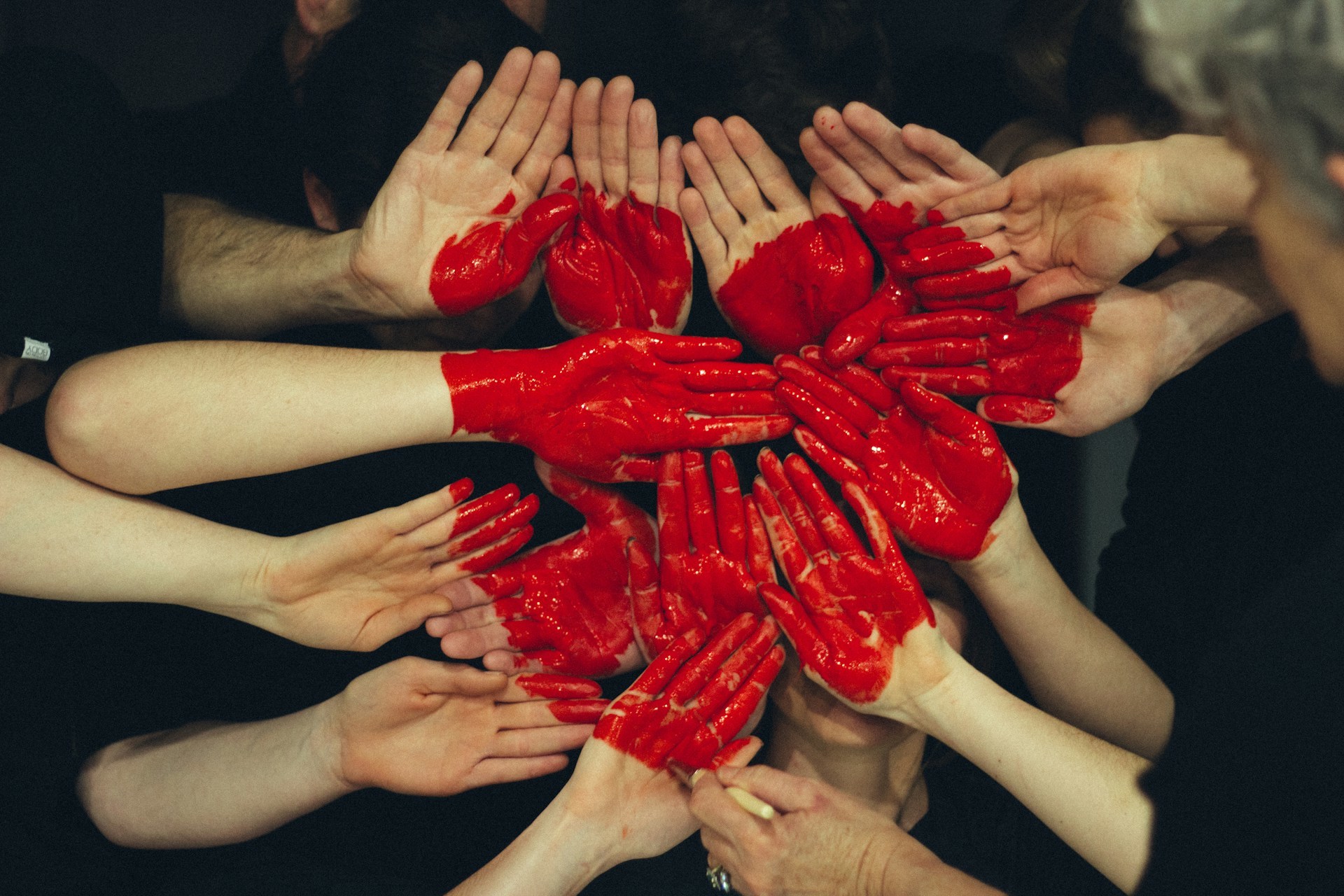Community Fundraising Transforms Addiction Recovery Programs
Community Fundraising Transforms Addiction Recovery Programs
From Arkron Fletcher
When campaigns connect recovery to issues people already care about—public safety, economic development, family welfare—they gain broader support.
Subscribe to follow campaign updates!
More Info
Here's something I learned watching my neighbor struggle with addiction: recovery isn't a solo sport. It's more like a team effort where everyone needs to show up—family, friends, strangers who become friends, and yes, even that guy who runs the corner store.
You know what's wild? Most addiction recovery programs work better when the whole community gets involved. Not just the "thoughts and prayers" kind of involvement, but the roll-up-your-sleeves, organize-a-bake-sale, actually-do-something kind. When communities start fundraising for recovery, magic happens. Real magic.
I'm talking about neighbors who barely wave at each other suddenly planning charity runs together. Local businesses that never collaborated before joining forces for benefit dinners. Kids learn about compassion while selling lemonade for a cause they don't fully understand yet but somehow feel matters.
The numbers back this up too. People in recovery with strong community support stay clean longer. They rebuild their lives faster.
But let's be honest—starting these campaigns feels overwhelming. Where do you begin? How do you get people to care about something they'd rather ignore? How do you turn good intentions into actual dollars that make a difference?
Why Local Fundraising Beats Writing Checks to Big Organizations
Look, I get it. Writing a check to some national charity feels easier. Clean. Simple. Done.
But here's what I've noticed after watching dozens of communities tackle addiction: local fundraising campaigns create something that distant donations never can. They build bridges between people who need help and people who can provide it.
Take transportation, for instance. You can't recover if you can't get treatment. Sounds obvious, right? Yet most people in early recovery don't have reliable cars. Public transit? Good luck finding a bus route that connects the low-income neighborhood to the treatment center across town.
Local fundraising campaigns solve this stuff. They buy van services. They organize volunteer driver programs. They purchase bus passes in bulk. One community I know started a "Rides to Recovery" program after their fundraising committee realized half the people missing appointments couldn't afford gas money.
Here's where it gets interesting: Summit Wellness Group addiction recovery programs work best when communities remove these practical barriers. It's not rocket science—just common sense applied with some heart.
Housing presents another puzzle. People leaving treatment need somewhere stable to live. Not fancy. Just safe and sober. National organizations might fund big facilities in major cities, but what about smaller towns? What about the single mom who needs a place where her kids can visit?
Local campaigns create solutions that fit local needs. They might renovate an old house into a sober living space. They could establish emergency housing funds. Sometimes they just help people with security deposits and first month's rent. Small stuff that makes huge differences.
And childcare—don't get me started on childcare. Parents in recovery face impossible choices. Get help and lose your kids to foster care? Or skip treatment and hope things work out?

Building Real Relationships Through Fundraising Events
Something funny happens when you organize a 5K run for addiction recovery. People show up who've never run anywhere except to catch the ice cream truck. They train together. They complain about sore muscles together. They cross the finish line together.
And somewhere between the starting gun and the post-race pizza, strangers become friends.
I watched this happen at a recovery walk last spring. A retired teacher started chatting with a guy in early recovery while they stretched. Turns out, she needed help with her computer. He needed job references. Six months later, he's working part-time at her son's business and she's volunteering at the treatment center.
These connections don't happen by accident. They grow from shared experiences. Volunteer opportunities multiply during fundraising campaigns, and people discover they have skills they never thought to offer. The accountant helps with budgets. The graphic designer creates flyers. The teenager with social media skills manages Instagram.
Random observation: People invest more in causes they actively support. When someone spends Saturday morning setting up chairs for a benefit dinner, they care more about the outcome than if they just wrote a check.
Storytelling emerges naturally from these events too. Recovery advocates share their journeys. Families talk about how addiction affected them. Community members explain why they showed up. These stories change minds faster than any statistics or pamphlets ever could.
I remember one woman at a pancake breakfast fundraiser describing how her son's addiction nearly destroyed their family. Then she introduced him—two years clean, working full-time, coaching little league. Half the room was crying. The other half was reaching for their wallets.
Mentorship relationships often start at these gatherings. People in long-term recovery meet newcomers. Business owners connect with job seekers. Families who've survived addiction support those currently struggling. It's like speed dating, but for building support networks.
Measuring Success Beyond Dollar Signs
Here's what most people get wrong about fundraising for addiction recovery: they focus too much on money raised and not enough on lives changed.
Don't get me wrong—money matters. Treatment costs real dollars. But the true impact shows up in ways that spreadsheets can't capture.
Recovery rates improve when communities actively support treatment efforts. People with strong local connections complete programs at higher rates. They maintain sobriety longer. They rebuild family relationships faster. It's like having a safety net made of human connections instead of just professional services.
Crime reduction often follows increased recovery support. When people access substance abuse treatment support instead of cycling through jail, neighborhoods become safer. Property crimes decrease. Drug-related arrests drop. Emergency room visits decline.
Personal bias alert: I think every police chief should be the biggest supporter of local addiction recovery programs. It's just good business sense.
Family stability improves when recovery resources become accessible. Children stay with parents who get help instead of entering foster care. Marriages survive addiction when treatment becomes available. Extended families heal when their loved ones find recovery.
But here's the thing about measuring impact: you need systems that track these outcomes over time. Successful communities establish partnerships between treatment providers, law enforcement, schools, and social services. They share data. They celebrate wins together. They adjust strategies when something isn't working.
Tackling the Tough Stuff That Nobody Wants to Talk About
Successful campaigns tackle stigma head-on. They share recovery stories. They educate about addiction science. They highlight community benefits of supporting treatment. When campaigns connect recovery to issues people already care about—public safety, economic development, family welfare—they gain broader support.
Resource competition creates another headache. Every community has limited charitable dollars and countless worthy causes competing for support. Recovery campaigns succeed by demonstrating clear impact, building broad coalitions, and showing how addiction affects everyone.
Volunteer burnout threatens campaign sustainability. The same dedicated people often shoulder multiple responsibilities, leading to exhaustion and resentment. Smart campaigns prevent burnout by rotating leadership, recognizing contributions, and creating manageable volunteer commitments.
Regulatory compliance can overwhelm volunteer organizers. Fundraising laws vary by state and locality. Tax requirements for nonprofit organizations create additional complexity. Successful campaigns partner with established nonprofits or hire professional help to navigate these requirements.
Communication strategies determine campaign success. Social media amplifies messages but requires consistent content creation. Traditional media provides credibility but demands professional presentation. Word-of-mouth remains powerful but spreads slowly.
The most successful campaigns I've seen use multiple channels while maintaining consistent messaging about recovery hope and community benefit. They also adapt their approach based on what's working and what isn't.

Making It Work in Your Community
Starting a fundraising campaign for addiction recovery feels overwhelming, but it doesn't have to be perfect from day one. Begin small. Organize a coffee morning. Host a garage sale. Plan a community walk.
The key is getting started and learning as you go.
Partner with existing treatment providers to identify the most pressing needs. Maybe your community needs more detox beds. Maybe it needs job training programs. Maybe it just needs better transportation to existing services.
Ready to start building recovery support in your community? Connect with local Personalized addiction treatment providers to identify the most pressing needs, then organize your first fundraising campaign around addressing those specific challenges.
Campaign Wall
Join the Conversation
Sign in with your Facebook account or email.
